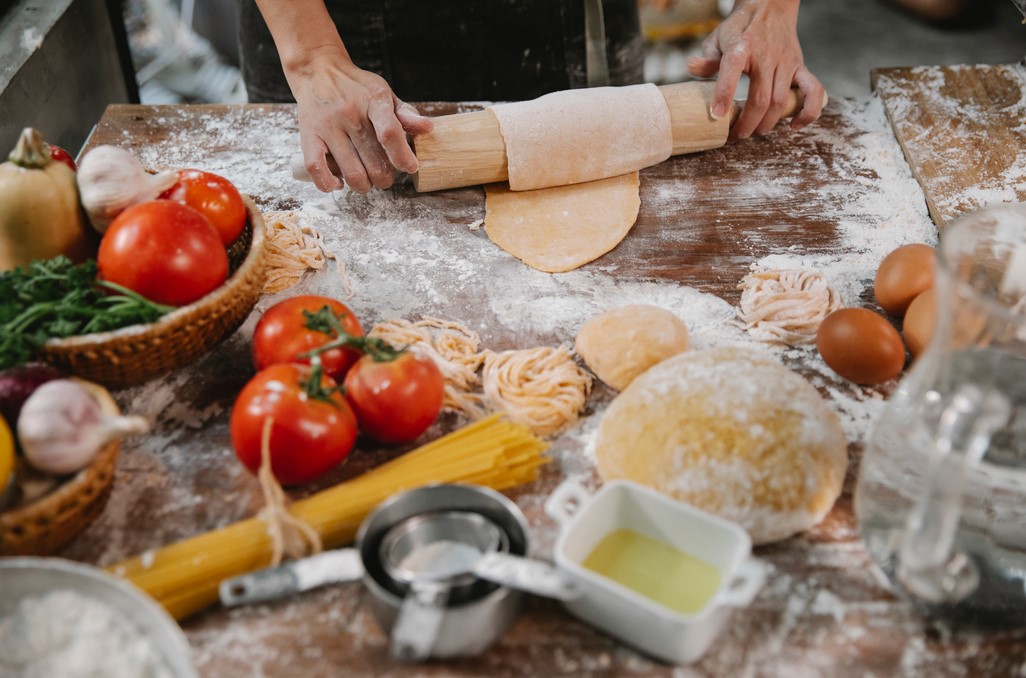
Exploring gastronomy is a fascinating journey into the world of food, where art and science converge to create extraordinary culinary experiences. Gastronomy is not merely about cooking or eating; it delves deeper into the understanding of food, its origins, preparation techniques, and how it affects our senses and emotions. Let’s explore the key aspects of this captivating subject:
1. Definition of Gastronomy: Gastronomy is the study of the relationship between food and culture, as well as the art and science of food and cooking. It involves understanding the history, ingredients, techniques, and traditions that contribute to the diverse cuisines found around the world.
2. Culinary Anthropology: Gastronomy encompasses the cultural and social aspects of food. It examines how food shapes and is shaped by human culture, traditions, and customs. The way people prepare and consume food is often influenced by their surroundings, beliefs, and historical practices.
3. Science of Taste: Gastronomy explores the science of taste perception, known as gustation. It involves understanding how our taste buds perceive the five basic tastes: sweet, sour, bitter, salty, and umami. Additionally, gastronomists study how factors like aroma, texture, and temperature influence our perception of flavors.
4. Culinary Arts and Techniques: Gastronomy celebrates the artistry of cooking. It involves learning various culinary techniques, such as knife skills, food preparation methods, cooking temperatures, and plating presentations, all of which elevate a dish from ordinary to exceptional.
5. Food Pairing and Molecular Gastronomy: Gastronomy takes an innovative approach to food pairing, exploring complementary and contrasting flavors to create harmonious and memorable dining experiences. Molecular gastronomy is a sub-discipline that involves applying scientific principles and techniques to transform the texture and taste of ingredients, often resulting in avant-garde culinary creations.
6. Local and Seasonal Food: Gastronomy emphasizes the importance of using fresh, local, and seasonal ingredients. Understanding the rhythm of nature’s produce allows chefs and home cooks alike to create dishes that showcase the best flavors each season has to offer.
7. Food and the Senses: Gastronomy recognizes that enjoying food is a multi-sensory experience. It involves not only taste but also the visual appeal of a dish, the aroma that wafts from it, and the texture it imparts as we eat. Combining these elements thoughtfully can elevate the pleasure derived from a meal.
8. Sustainability and Ethical Eating: Modern gastronomy addresses the importance of sustainable and ethical food practices. It encourages responsible sourcing of ingredients, reducing food waste, and considering the environmental and ethical impact of food choices.

9. Cultural Exchange: Exploring gastronomy allows people to learn about other cultures through their food. Trying different cuisines and traditional dishes from various regions fosters cultural appreciation and understanding.
10. Experiential Dining: Gastronomy often goes beyond merely eating food. It involves the entire dining experience, including the ambiance, service, and storytelling behind a dish or a culinary tradition.
Overall, gastronomy is a comprehensive exploration of food that connects cultures, science, and creativity. Whether you’re a chef, a food enthusiast, or someone who enjoys exploring different cultures, delving into the world of gastronomy is sure to be a fulfilling and enriching experience.
Related Posts
Barcelona Beyond Gaudi: Savoring Art, Food, and HistoryBarcelona is a vibrant and culturally rich city that offers much more than just the architectural wonders of Antoni Gaudí. If you're interested in delving deeper into the city's art, food, and history, there are plenty of amazing experiences to savor. Here's a guide to help you make the most of your trip: 1. Art and Museums: - Museu Picasso: Explore the works of one of the most influential artists of the 20th century, Pablo Picasso. The museum houses an extensive collection of his early works, showcasing his evolution as an artist. - Museu Nacional d'Art de Catalunya (MNAC): This museum is home to an impressive collection of Catalan art spanning various periods, including Romanesque, Gothic, Renaissance, and Modernism. - Fundació Joan Miró: Discover the unique and imaginative art of Joan Miró, a renowned Catalan surrealist painter and sculptor. The museum is located on Montjuïc hill and offers stunning views…
Embracing the Present: The Art and Science of MindfulnessIn a fast-paced and ever-changing world, the concept of mindfulness has emerged as a powerful antidote to stress, anxiety, and the constant noise of modern living. Mindfulness, rooted in ancient wisdom and backed by scientific research, offers a profound way to reconnect with ourselves, our surroundings, and the present moment. In this article, we explore the essence of mindfulness, its benefits, and how to incorporate it into our daily lives to cultivate a sense of inner peace and well-being. Understanding Mindfulness: At its core, mindfulness is the practice of paying attention to the present moment with an open and non-judgmental mindset. It involves being fully aware of our thoughts, feelings, bodily sensations, and the environment around us, without getting entangled in them. Mindfulness encourages us to observe our experiences with curiosity and acceptance, fostering a deeper understanding of ourselves and the world. The Science Behind Mindfulness: Extensive research has shown…
How to become an art collector1. Research: Start by researching the styles of art that appeal to you. Visit art galleries, museums, and exhibitions to develop an understanding of various artists and their works. 2. Build a network: Connect with people who are interested in art and attend events and meet-ups related to art. This will help you gain knowledge and make informed decisions about buying artworks. 3. Budgeting: Decide on a budget based on your goals and financial capacity. You can start with buying affordable and emerging artists' works and later move to contemporary or established artists. 4. Purchase: Start by buying art from reputable dealers, galleries, and auction houses. Be careful of scams and always verify the authenticity of the artworks. 5. Storage and maintenance: Invest in proper storage and handling of artworks to ensure their preservation. 6. Diversify your collection: As you collect, diversify by acquiring different genres, periods, and styles of…
Elevate Your Living Space: The Art of Decorating with ArtYour living space is a canvas waiting to be adorned with creativity and personality. One of the most captivating ways to enhance your home's ambiance and express your unique style is through the thoughtful use of art. Whether you're an art aficionado or a novice appreciator, this article will guide you through the art of decorating with art to transform your living space into a captivating and harmonious sanctuary. 1. Reflect on Your Aesthetic Taste Before diving into the world of art, take a moment to reflect on your aesthetic preferences. Consider your favorite colors, themes, and artistic styles. Are you drawn to modern and abstract pieces, or do you prefer classic and timeless art? Understanding your taste will help you choose artworks that resonate with your soul and complement the overall design of your living space. 2. Start with a Focal Point Select one or more prominent walls in…
Embracing the Zen: Exploring the Timeless Beauty of the Japanese LifestyleJapan, a country rich in culture and tradition, is known for its unique way of life that harmoniously blends ancient practices with modern sensibilities. The Japanese lifestyle, deeply rooted in mindfulness, simplicity, and respect for nature, has captivated the world with its charm and elegance. In this article, we'll delve into the essence of the Japanese lifestyle and the principles that guide the daily lives of its people. Emphasis on Mindfulness Central to the Japanese lifestyle is the concept of mindfulness, known as "mindful living" or "ichigo ichie." This philosophy encourages individuals to be fully present in each moment, cherishing every encounter and experience as if it were a once-in-a-lifetime event. Whether savoring a cup of matcha tea, admiring the fleeting beauty of cherry blossoms, or engaging in a traditional tea ceremony, the Japanese value being fully present in all aspects of life. Simplicity and Minimalism The Japanese lifestyle embodies…
Overcoming Emotional Eating: Coping Without FoodOvercoming emotional eating can be challenging, but it is possible with the right strategies and support. Emotional eating is a coping mechanism where people use food to deal with their emotions, such as stress, sadness, boredom, or even happiness. Here are some tips to help you cope without turning to food: 1. Identify Triggers: Start by becoming aware of the emotions and situations that trigger your emotional eating. Keep a journal to track your feelings and the times you tend to reach for food. This will help you recognize patterns and understand your triggers better. 2. Find Alternative Coping Mechanisms: Explore non-food-related activities that can help you cope with emotions. Engage in activities you enjoy, such as walking, yoga, reading, writing, drawing, or spending time with loved ones. Find healthy ways to distract and soothe yourself. 3. Mindfulness and Meditation: Practicing mindfulness and meditation can help you become more aware…
Treat your dog with a homemade foodIt's important to ensure that homemade dog food provides all the necessary nutrients for your furry friend. Here are 20 balanced and nutritious recipes for homemade dog food: **1. Chicken and Rice Delight:** - Ingredients: Cooked chicken, brown rice, sweet potatoes, peas, carrots, and a dash of olive oil. **2. Beef and Quinoa Bowl:** - Ingredients: Cooked ground beef, cooked quinoa, spinach, green beans, and a sprinkle of flaxseed. **3. Turkey and Pumpkin Stew:** - Ingredients: Cooked ground turkey, pumpkin puree, cooked oats, broccoli, and a drizzle of fish oil. **4. Salmon and Sweet Potato Medley:** - Ingredients: Cooked salmon, boiled sweet potatoes, green peas, and a teaspoon of coconut oil. **5. Lamb and Lentil Mix:** - Ingredients: Cooked lamb, boiled lentils, carrots, zucchini, and a touch of turmeric for added flavor. **6. Tuna and Brown Rice Blend:** - Ingredients: Canned tuna, cooked brown rice, spinach, and a splash of…
Exploring the World of Film through CategoriesMovies have been a significant form of entertainment and storytelling for over a century. With such a vast and diverse array of films available, it can be overwhelming to navigate the cinematic landscape. One effective way to narrow down your choices is to explore movie genres, which categorize films based on their themes, styles, and narrative elements. By understanding movie genres, you can discover films that align with your preferences and explore new cinematic experiences. Here's a brief overview of some popular movie genres: 1. Action: Packed with adrenaline-fueled sequences, explosions, and intense combat scenes, action films focus on physical feats and heroics. 2. Comedy: Designed to evoke laughter, comedies use humor and wit to entertain audiences. 3. Drama: Often grounded in real-life situations, dramas delve into complex emotions and relationships, aiming to provoke a profound emotional response. 4. Thriller: These suspenseful films keep audiences on the edge of their…
Tips to choose the art pictures for your living roomChoosing art pictures for your living room is a wonderful way to personalize your space and add character and style to your home. Here are 20 detailed tips to help you make the best choices: Define your style: Determine the overall style you want for your living room. Consider whether you prefer modern, traditional, minimalist, abstract, or other art styles that resonate with you. Consider the room's theme: If your living room already has a theme or color scheme, look for art that complements or enhances it, creating a cohesive and harmonious look. Size matters: Measure the available wall space to decide the appropriate size for your art. Avoid pieces that are too small and get lost on a large wall or too big and overwhelm the room. Balance and proportion: Consider the balance of the room when selecting art. If you have a large sofa or furniture piece on…
Delicious and Nourishing: Exploring the Health Advantages of Indian FoodIndian cuisine is renowned for its rich flavors, vibrant colors, and aromatic spices. But beyond its delicious taste, Indian food offers a plethora of health advantages that have been cherished for centuries. From a wide variety of plant-based ingredients to the use of traditional spices, Indian cuisine encompasses a wealth of nutrients and benefits that contribute to overall well-being. In this article, we'll delve into the health advantages of Indian food, shedding light on the secrets behind this delectable and nourishing culinary tradition. 1. Abundance of Plant-Based Ingredients Indian cuisine celebrates an array of plant-based ingredients, including vegetables, legumes, lentils, and grains. These foods are rich in essential vitamins, minerals, and dietary fiber, supporting digestive health and providing essential nutrients for the body. 2. Spices with Medicinal Properties Indian cooking is famous for its skillful use of spices, each with its own set of health benefits. Turmeric, for instance, contains…



